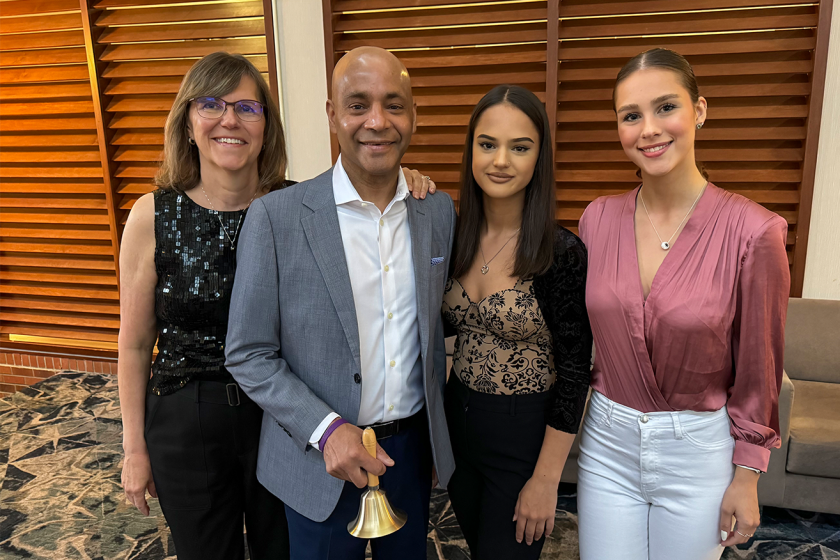A Beacon to Lead More Than Half of Us Out of History’s Amnesia : Women: The Hall of Fame in Seneca Falls, N.Y., is a little-known citadel honoring far-reaching achievements.
Who among us remembers, or indeed ever knew, that Alice Hamilton was the pioneering doctor whose investigations led to laws protecting workers from harmful fumes and lead poisoning? Or can recount one accomplishment of Ida Wells-Barnett?
Yet, when I said that I was going to visit the National Women’s Hall of Fame, established in 1969, more than one cynic questioned the need for a women’s hall of fame.
There are baseball and football halls of fame--and friends just spotted a dirt-bike hall of fame. Nobody questions their legitimacy. But such a flippant reply denies the educational opportunity presented by the question, and education is part of the hall’s mission.
When 35 women were inducted into the National Women’s Hall of Fame last month, even the women’s history junkies present learned of women about whom we had known virtually nothing. We found, for example, that one of the honorees, bacteriologist Alice Evans, identified the organism causing undulant fever--caught it herself, in fact--and that her discovery led to laws mandating milk pasteurization, which saved thousands of lives. We heard from Helen Stephens about how she went from a school with no athletic programs for girls in Fulton, Mo., to capture two gold medals in the 1936 Olympics in Berlin.
Stephens pointed to another rationale for this hall of fame. In the 1930s when she had to scrounge for a sweat shirt and pants and run in floppy old tennis shoes, Mildred (Babe) Didrikson Zaharias was already winning athletic events. “I thought if she can do it, so can I,” said Stephens. “There was somebody out there making a path.” Zaharias’ path led to her induction to the hall in 1976.
Today, girls seeking inspiration can see both Zaharias’ and Stephens’ achievements enshrined on walls near plaques honoring Eleanor Roosevelt, actress Helen Hayes or artist Mary Cassatt.
The hall also honors women who have helped preserve their own culture or protect working people. Katherine Siva Saubel of Banning, Calif., spoke in the Cahuilla language that she has helped record while receiving her award. Dolores Huerta, co-founder with Cesar Chavez of the United Farm Workers, urged more research into pesticide-related cancers she said are killing field hands’ children.
The Hall of Fame is located in Seneca Falls, N.Y., site of the first U.S. women’s rights convention in 1848. That session, at which women demanded not only the vote but also educational opportunities and the right for married women to own property, was convened by Elizabeth Cady Stanton and Lucretia Mott. They, too, are enshrined in the hall.
The shell of the Wesleyan Chapel in which their meeting occurred is up the street from the Hall of Fame. Along with a museum that opened this past summer and a monument with an inscription of the Declaration of Sentiments produced those two days in 1848, the chapel forms the heart of the Women’s Rights National Historical Park, run by the National Park Service.
History is one of those subjects that must be nurtured in every conceivable way. That is what is so important about the park service museum and the privately run hall. One way or another, you have to draw people into an understanding of their past or they will spend years reinventing the wheel.
Visitors to the museum can see displays on women in the American Revolution or punch buttons on an interactive television to analyze contemporary sex discrimination cases. Then they can walk down the street to the Hall of Fame and see highlighted the accomplishments of individual women.
The field of women’s history has exploded in the last 20 years. One of its mainstays, Gerda Lerner of the University of Wisconsin, says that over the centuries, women’s history has been lost and found, lost again and found again and then re-lost and re-found yet again. But you can head off that historical amnesia if you can post on a wall in Seneca Falls the reasons to remember Ida Wells-Barnett, one of the first black U.S. journalists, whose newspaper office was wrecked when she started crusading against lynching.
There would have been no question about having a women’s hall of fame from anyone who saw Mamie Till Mobley, mother of Emmett Till, who was murdered in the Mississippi Delta in 1955, accept the honor medallion for civil-rights pioneer Rosa Parks. Parks’ refusal to move to the back of the bus, occurring just months after Till’s battered body was found, triggered the Montgomery bus boycott and the rise to fame of Dr. Martin Luther King Jr. Parks’ act of personal bravery, said Mobley, “gave birth to a new kind of freedom.”
It should have been on national television. Then everyone could have had a history lesson.
More to Read
Get our high school sports newsletter
Prep Rally is devoted to the SoCal high school sports experience, bringing you scores, stories and a behind-the-scenes look at what makes prep sports so popular.
You may occasionally receive promotional content from the Los Angeles Times.






